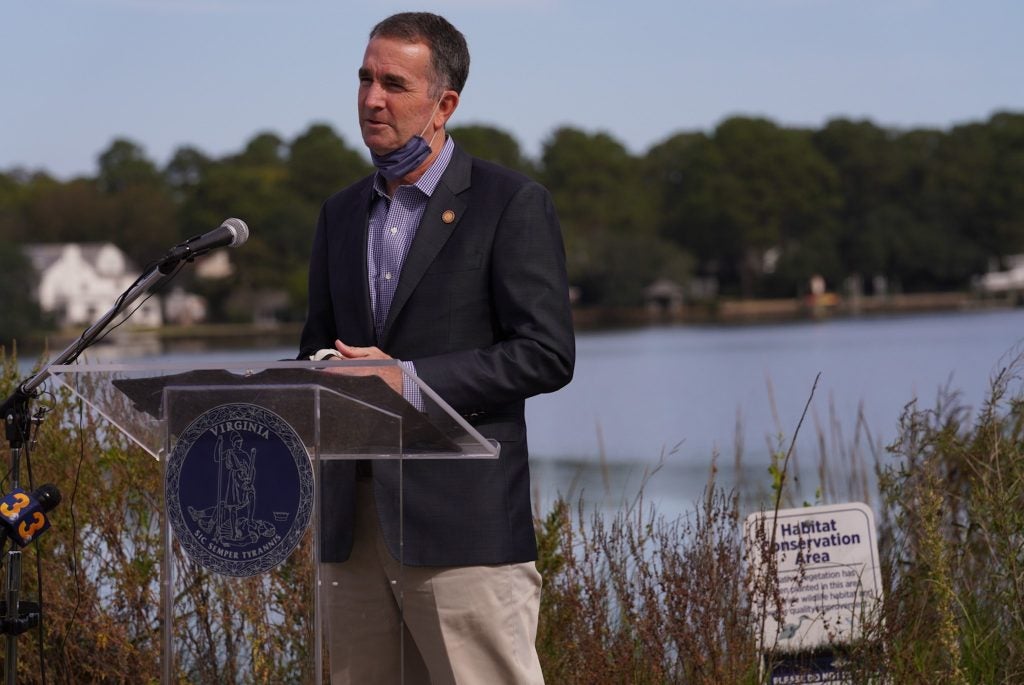Virginia is experiencing the highest rates of sea level rise on the Atlantic seaboard, posing a significant risk to 70% of its population that lives along the coast.
Last month Gov. Northam released the Virginia Coastal Master Planning Framework, a roadmap to guide development of the Commonwealth’s first Coastal Resilience Master Plan expected to be released in 2021. The plan will lay out a suite of projects to build resilience and reduce future flood risk to Virginia’s communities, economy and ecosystems.
This is a big step for Virginia as it joins a host of other states releasing resilience plans to address the impacts of a changing climate and coasts.

“The science is clear: climate change is threatening our way of life, and there is no time to waste. We must act quickly and decisively — and the Coastal Master Planning Framework will be our roadmap to resilience in coastal Virginia.” — Virginia Gov. Northam
Sea level rise and tidal flooding present significant risk
Virginia’s coastal communities are already seeing impacts from encroaching seas, higher tides and increased precipitation events. A 2020 study by the First Street Foundation found approximately 444,319 properties in the Commonwealth are currently at risk of flooding, with that number projected to grow nearly 30% within 30 years.
In the Hampton Roads region, recurrent flooding has increased from 1.7 days of flooding per year in 1960 to 7.3 days per year in 2014 — and projections estimate this could grow to up to 200 days per year by 2049.
Hampton Roads, home to the largest naval base in the world and a major U.S. port, is also the second-largest population center at risk in the country behind only New Orleans. A 2016 study estimated that Naval Station Norfolk, which supplies 46% of the local economy, will flood 280 times a year by 2050. Regular flooding could have catastrophic impacts on the local economy, communities and infrastructure connected with the base.
Virginia’s new framework provides a path toward resilience
The Coastal Master Planning Framework lays the foundation for a whole-government approach to building coastal resilience.
Some key elements of the framework include aligning state, regional and local hazard mitigation efforts and prioritizing natural infrastructure and adaptation, including in some cases strategic relocation, to reduce flood risk. The plan will have four distinct planning regions based on current Planning District Commissions to help coordinate work regionally and leverage ongoing investments.
The framework also commits to prioritizing meaningful public outreach and engagement, particularly for traditionally underserved communities, and outlines the need to create a long-term financing strategy for the plan. The Virginia Coastal Master Planning Framework provides an ambitious and necessary path toward a safer, more resilient and equitable coastal Virginia. Share on X
What’s next for Virginia?
A new technical advisory committee will turn to the latest science to develop a list of prioritized projects for the plan that address sea level rise and climate change risks. This plan will allow the state to coordinate with local, regional and federal efforts toward a shared goal of making coastal Virginia more resilient.
The framework elevates Virginia’s Coastal Zone Management Program to work alongside the technical advisory committee, with leadership from Virginia’s Chief Resilience Officer. State officials are also planning to host a series of community roundtables as part of a comprehensive public outreach strategy.
One existing source of funding for the plan will be 45% of auction proceeds from the Regional Greenhouse Gas Initiative (RGGI), which will go into the Community Preparedness Fund created last year by Virginia’s General Assembly. RGGI is estimated to generate $500 million over the next ten years for flood protection and, importantly, 25% of those funds are designated for low-income communities.
The technical advisory committee will develop potential future long-term funding opportunities, including innovative bonds, public-private partnerships and federal funding streams.
The Virginia Coastal Master Planning Framework provides an ambitious and necessary path toward a safer, more resilient and equitable coastal Virginia. Going forward, the state’s leadership, research institutions, local governments and communities must all work together to bring this plan into reality.
To provide comments on the Virginia Coastal Master Planning Framework, email ResilientCoastVA@govenor.virginia.gov.









